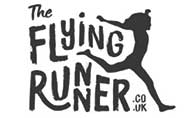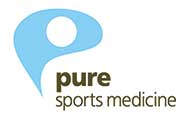Menu
At the haloed surrounds of the Stratford Holiday Inn for an England Athletics session with Alan Storey and Lindsay Dunn. Both have a vast array of GB Olympians and internationals they have coached and both have their coaching roots in the North East. Alan is maybe best known nowadays for having coached Mo Farah for 8 years before he relocated to the Nike project in the USA, and anyone reading this will definitely know about that. The number of sub 29 10k runners and sub 2.12 marathoners he has coached is unlikely to be matched by any GB coach. The overarching points that emerged through the discussion included:
- Progress is made over the long term, by consistency of training and by adapting the details to individuals based on their particular adaptations and feedback, whilst remaining in the realms of their specific event needs
- Seek to develop athlete responsibility and decision taking (‘empowerment’ would be the word, which wasn’t really invented when these guys were cutting their coaching teeth)
- Keep an ongoing core of training at around Anaerobic Threshold. Don’t obsess that the pace and heartrate has to be exactly at where the AT is supposed to be, there are training benefits to be had on either side of this, but be aware of how you are skirting around it so you get the right balance of intensity you are seeking. Interestingly the latter point is very similar to what Alberto Salazar mentioned in a UKA coaching seminar in Birmingham about 4 years ago, so that Mo might do a 10 mile run a bit slower than AT and he might also do 6 x 1 mile with a 60/90 sec recovery a bit faster than AT- both get the job done in a slightly different way. You don’t need a degree in coaching to see that one is more half marathon specific and one more focused at 10k. Lyndsay suggested a regular 3 mile/5k run at this pace is a reliable way of monitoring fitness. Without particularly thinking about this, I’ve recently come to the view that for long distance running training and planning, in a world where runners increasingly want clear pace guidelines for every run, it’s the AT which works best as the middle ground from which to extrapolate faster and slower paces, rather than what has for many been the traditional benchmark of velocity/speed at VO2 max.
- Strength and conditioning in a perfect world would be designed by the S+C coach, based on the athlete’s particular physical profile as advised by the physio (basically, strengths and weaknesses) and integrated by the running coach, and adapted by an ongoing review of the athlete’s biomechanics. It was reassuring that they name checked Christian Poole and PureSport as two particular experts on this aspect of performance, as I am a regular referrer of runners to them. Neither coach claimed any huge expertise on the S+C front, though Alan generalised that he would be looking for a package in which a runner did about 3 x 40 minute S+C sessions in the general endurance build up and maintained this with about 2 x 30 minutes in the event-specific prep phase.
- Alan’s one point on what he might do differently if he was staring out again, was that twice a week, almost year round, he would ask endurance runners, whatever their event in he endurance spectrum up to marathon, to run ‘fast’, close to maximum speed, for short bouts of 10-12 seconds, whatever other training was going on. Or as another coach around the table paraphrased ‘ so, strides’.

